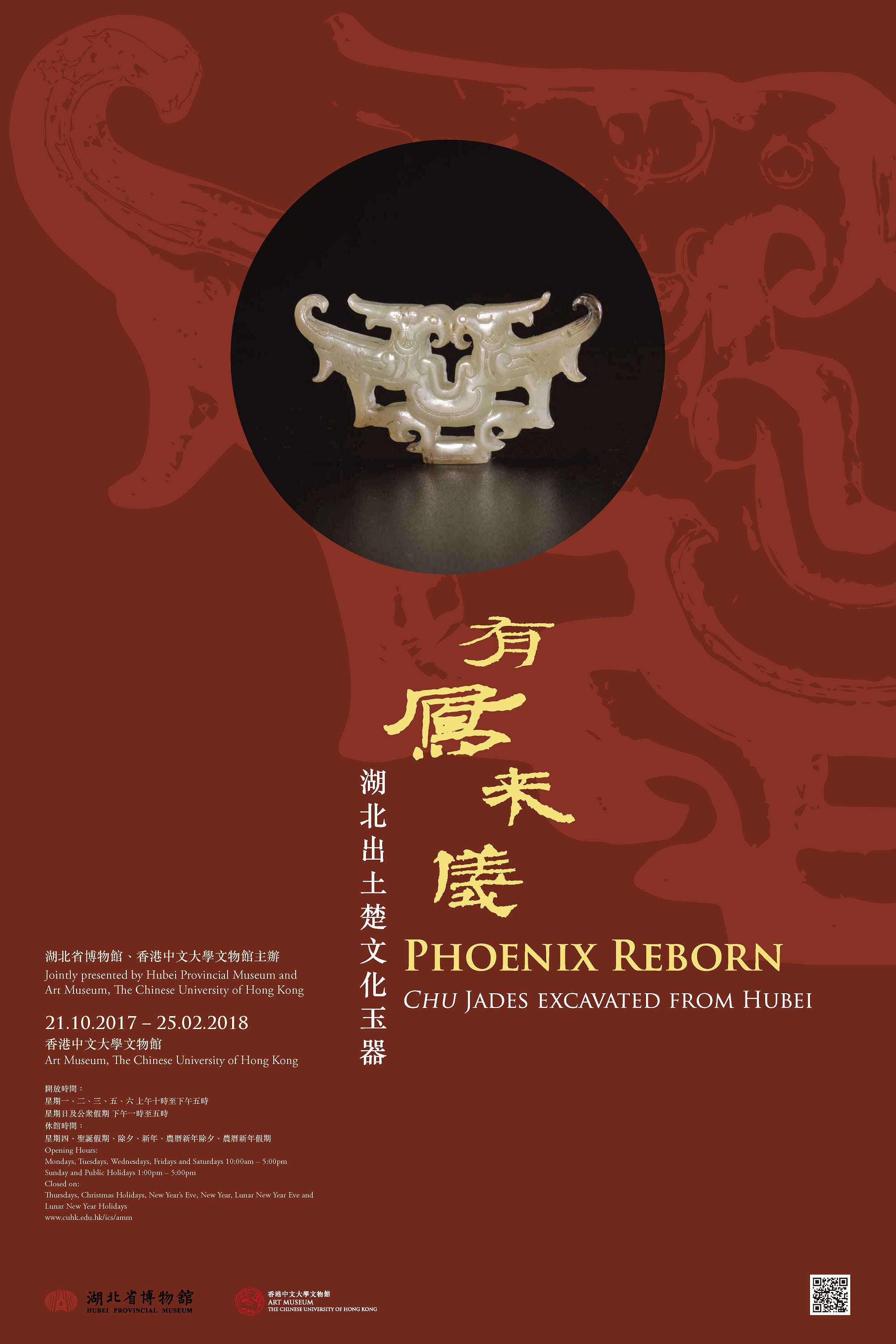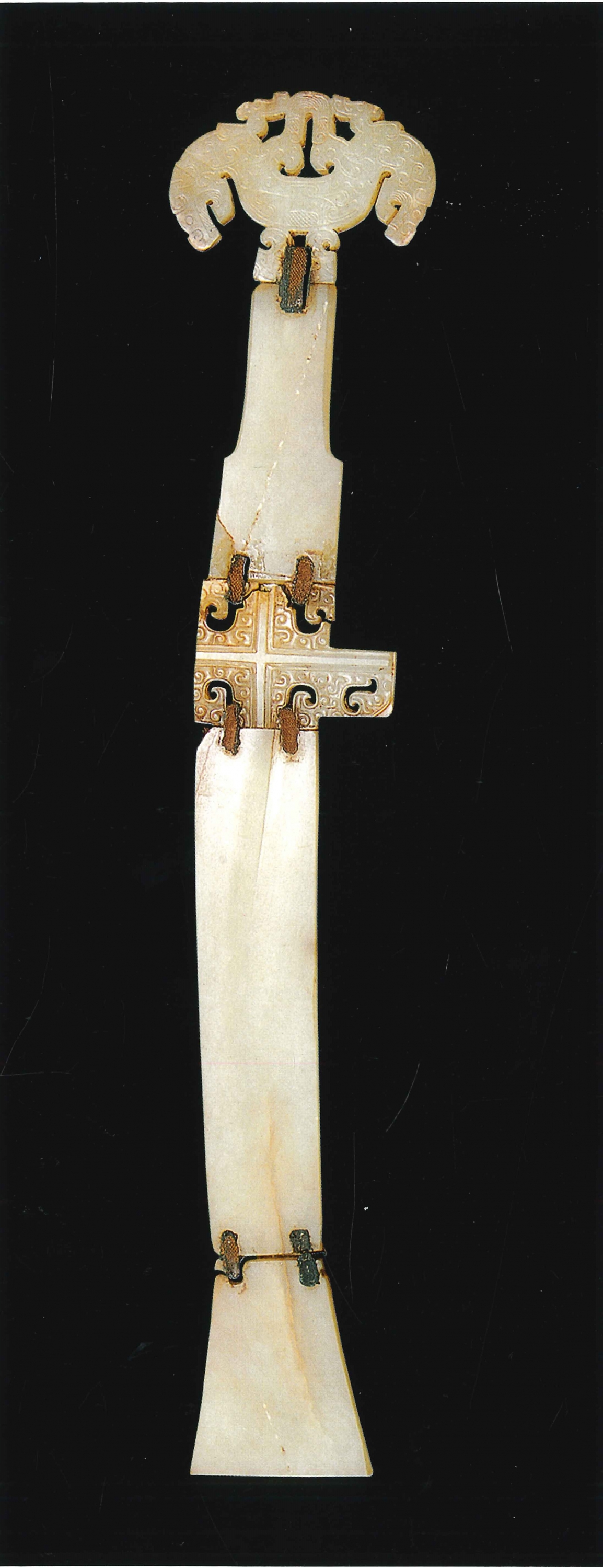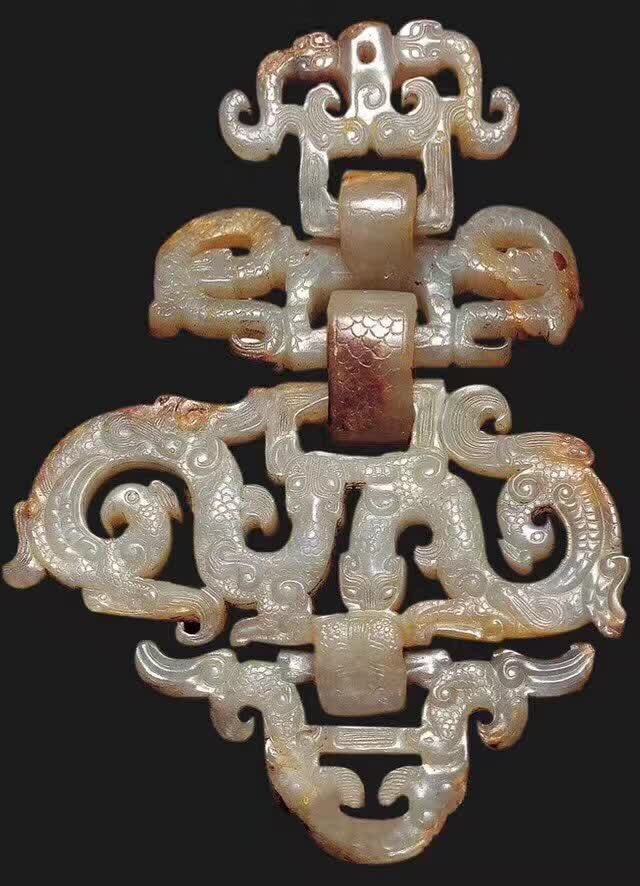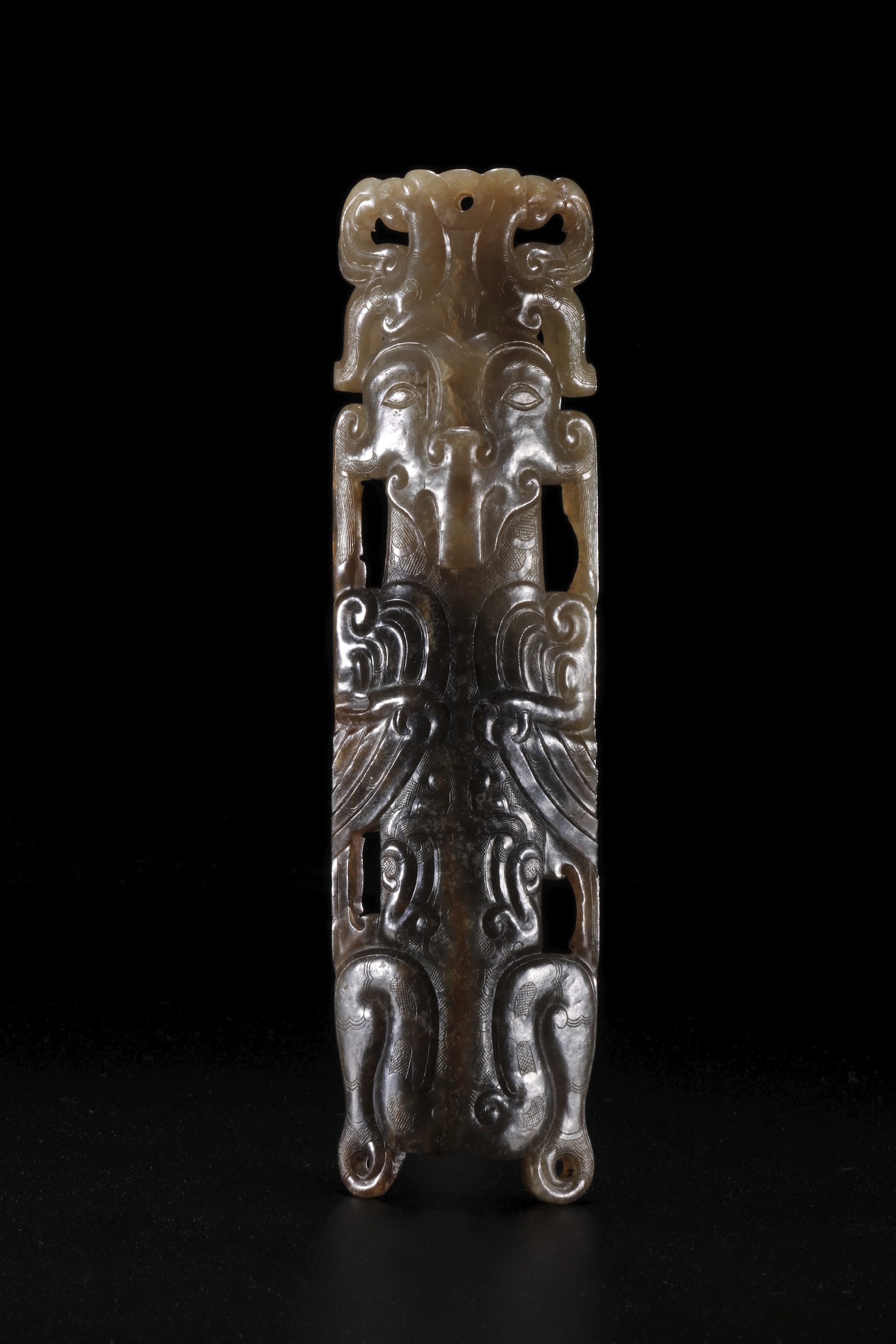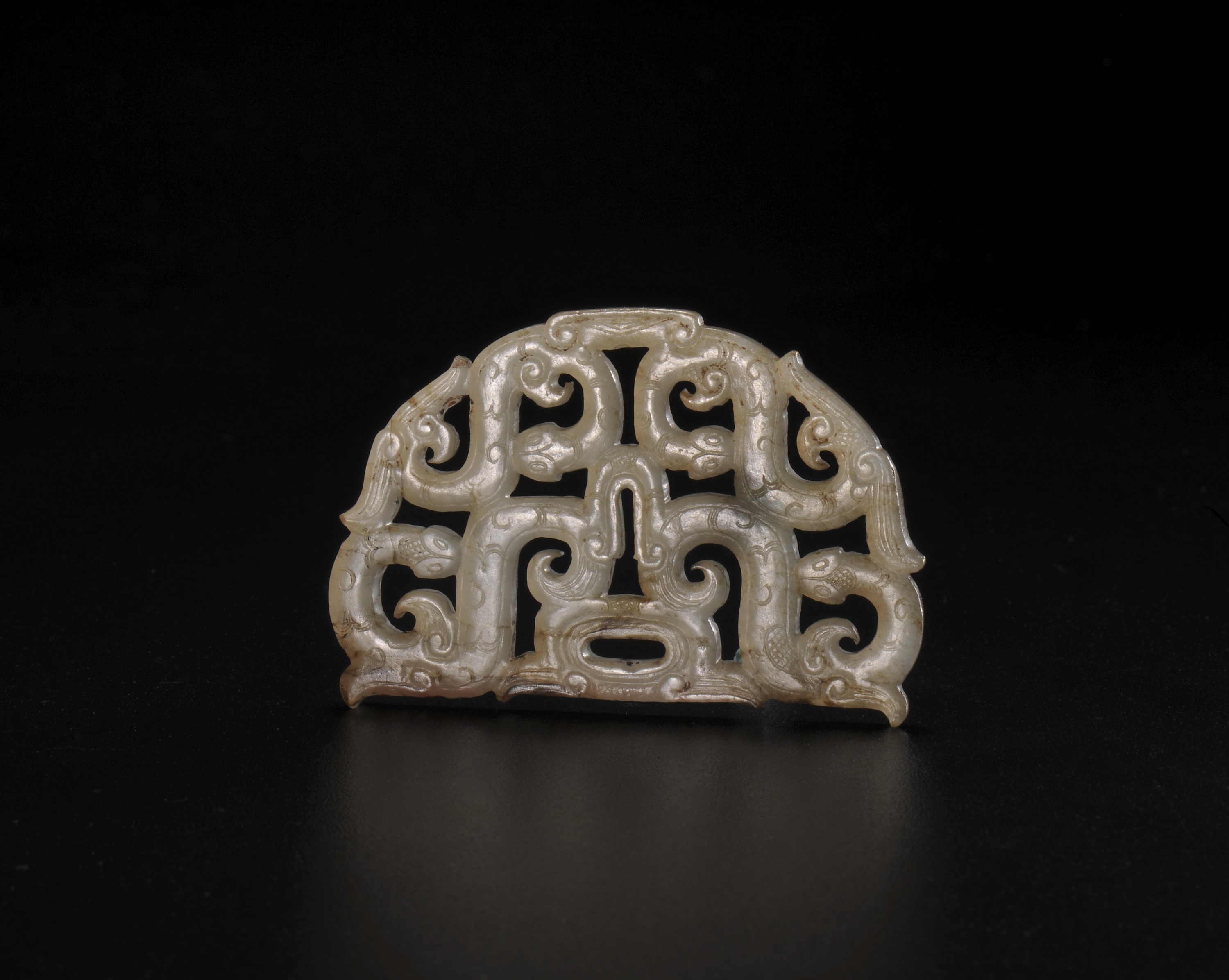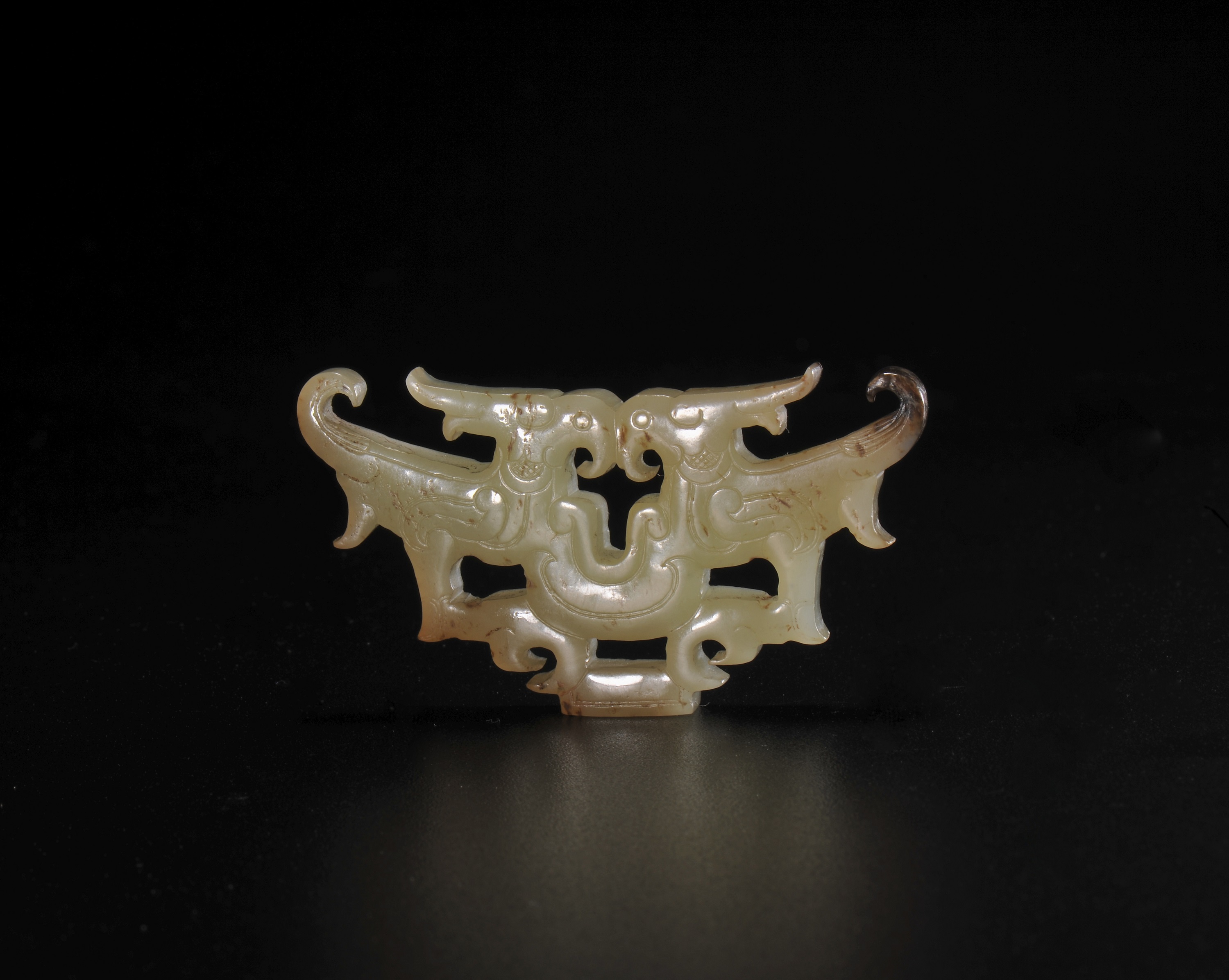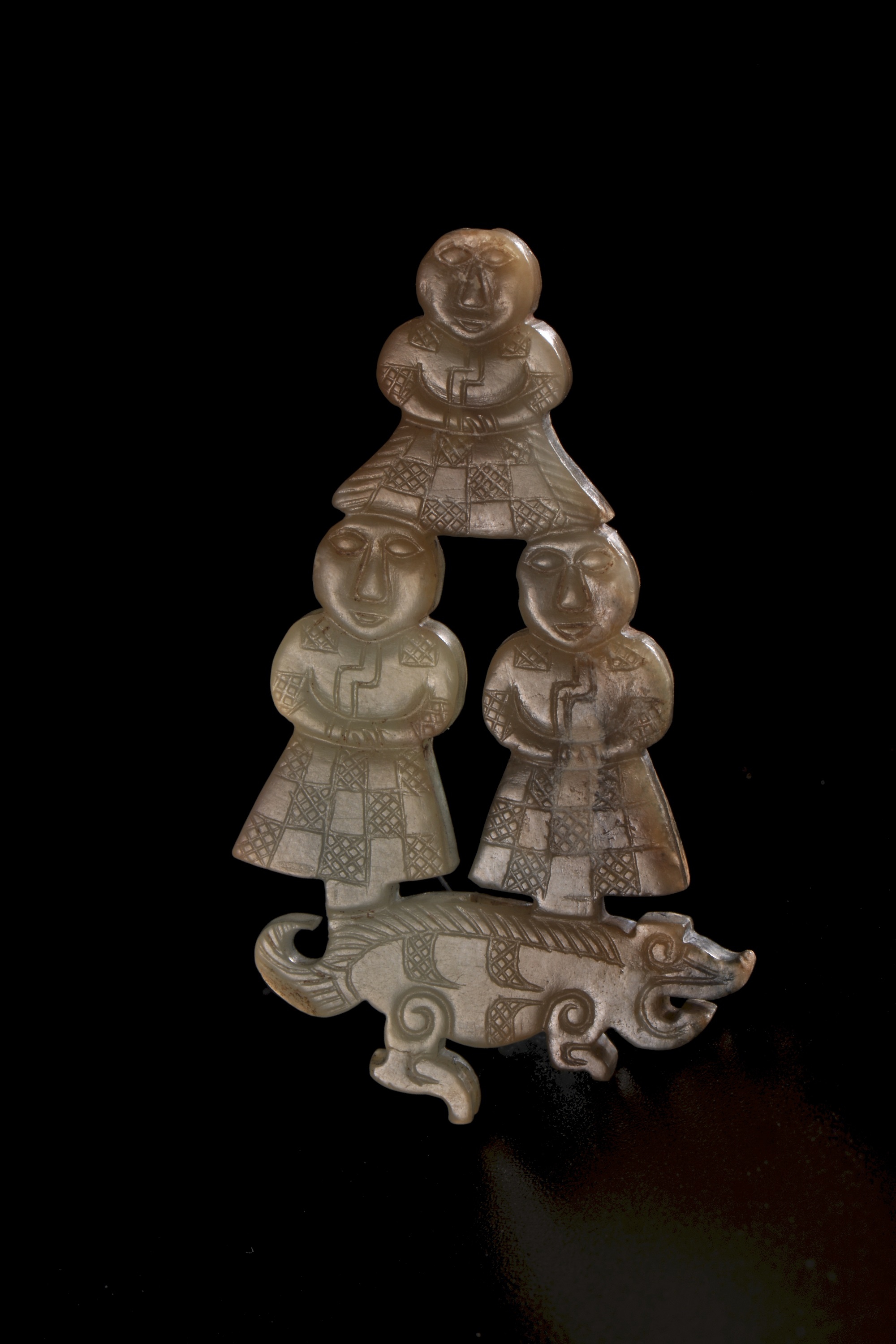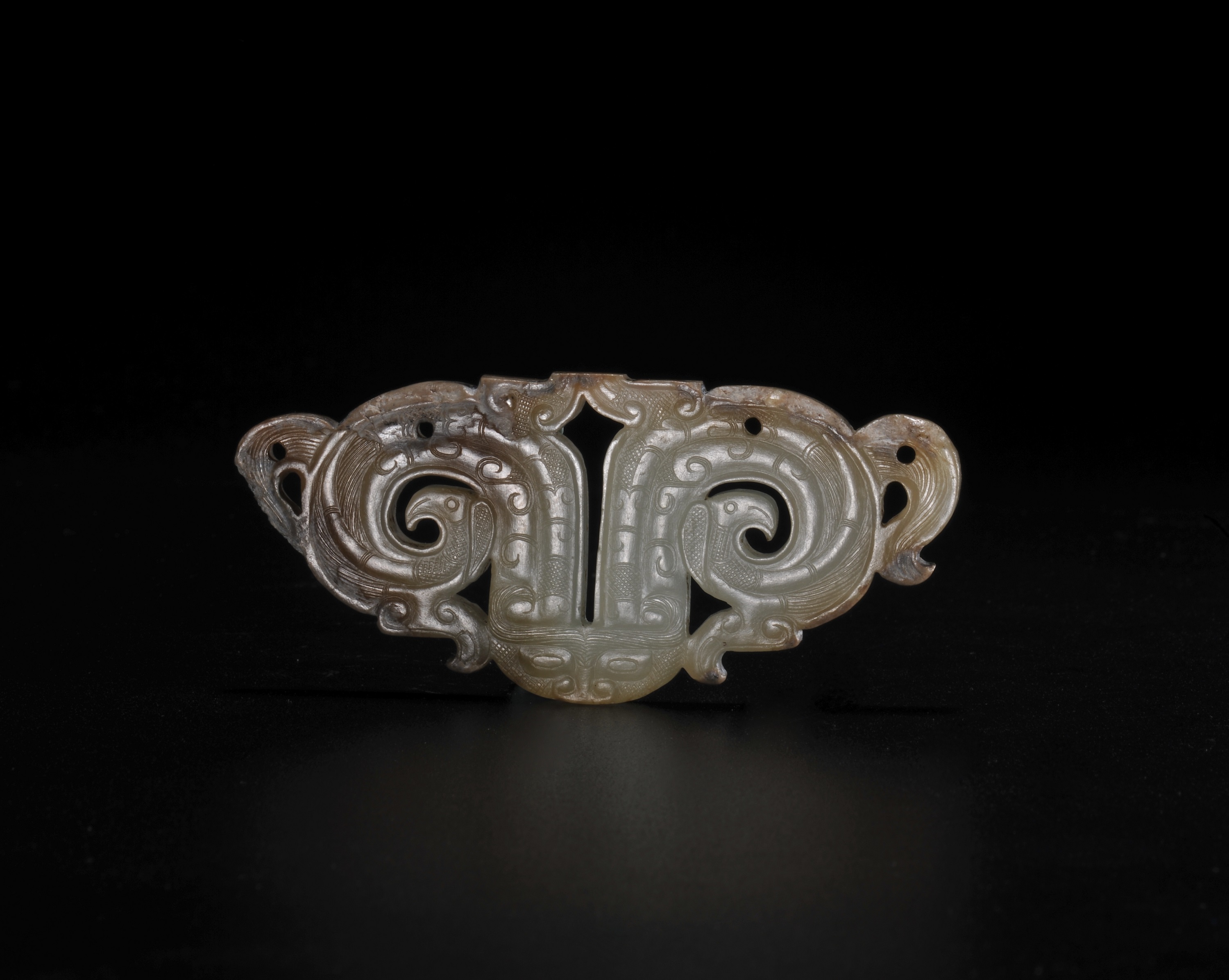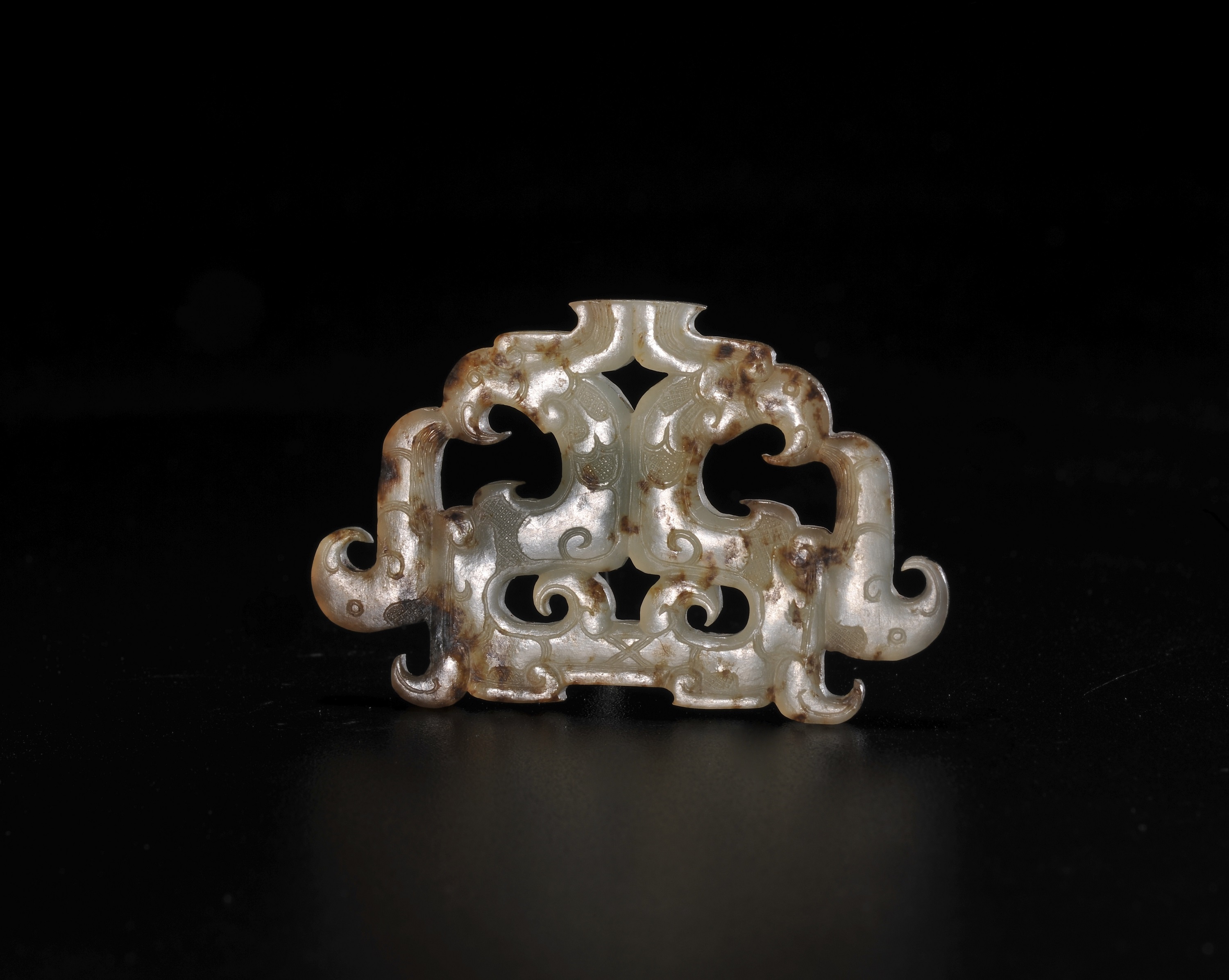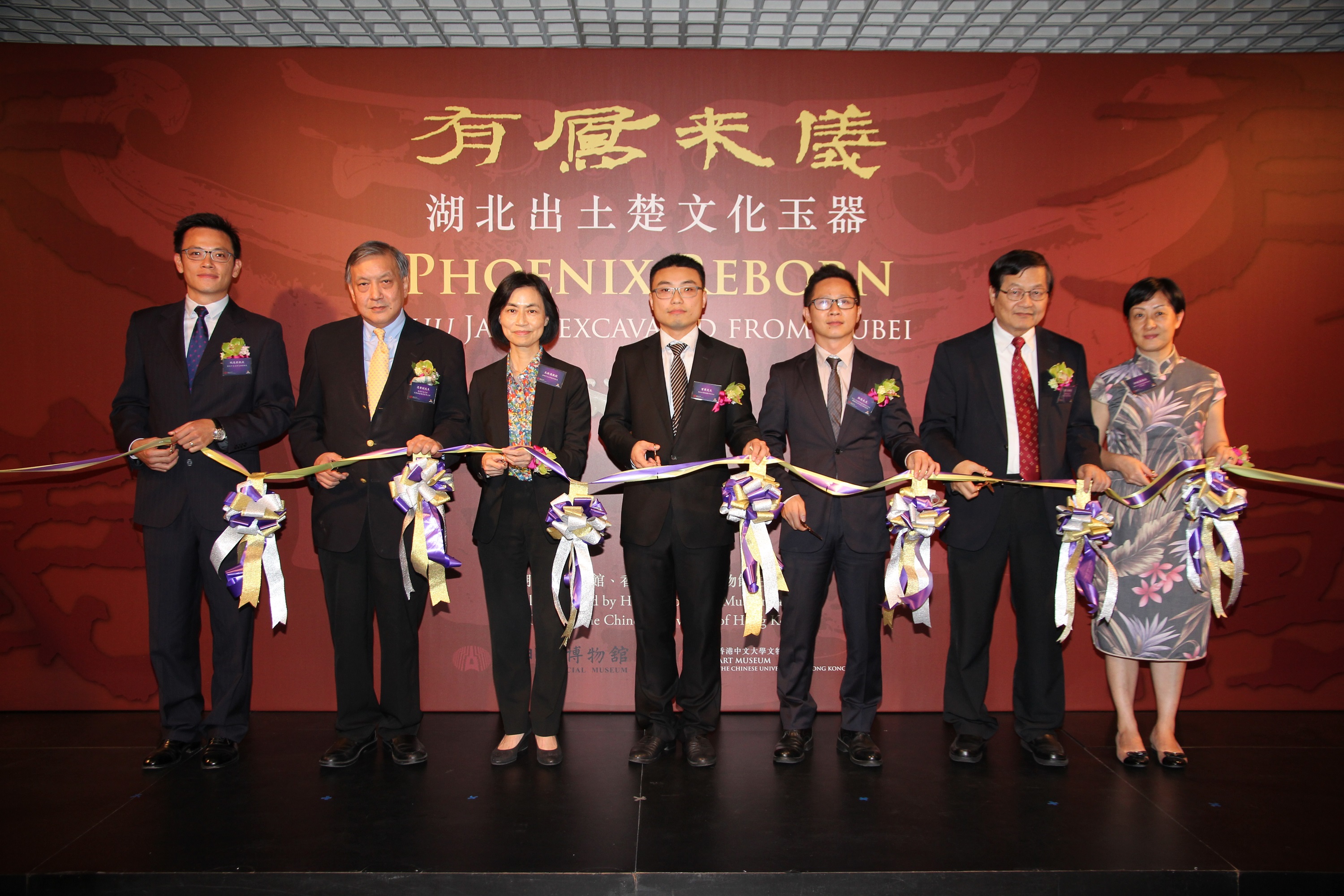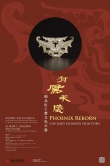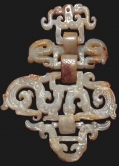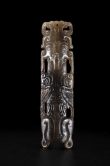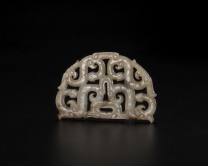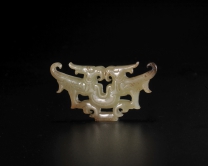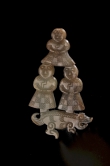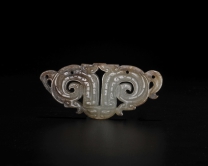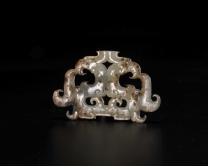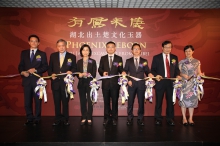CUHK
News Centre
CUHK Art Museum Presents ‘Phoenix Reborn: Chu Jades Excavated from Hubei’ Exhibition
The Art Museum of The Chinese University of Hong Kong (CUHK) will present the ‘Phoenix Reborn: Chu Jades Excavated from Hubei’ exhibition, from 21 October 2017 to 25 February 2018. The exhibition explores the impact of Chu culture through jade carving, featuring 158 pieces of jade excavated in Hubei Province from tombs dating from the Zhou Dynasties to the mid and late Warring States. These tombs were located in the ancient Kingdom of Zeng (Guojiamiao and Zeng Houyi) and the Kingdom of Chu (Shanwan, Yaojiagang, Caojiagang and Jiuliandun). None of the objects in this exhibition has ever been exhibited outside mainland China before. Admission is free and all are welcome.
The opening ceremony for the exhibition was held today (20 October). The officiating guests included Mr. Zeng Pan, Head of the Exhibition Department of the Hubei Provincial Museum; Mr. Wu Jun, the Director-General of the Department of Publicity, Culture and Sports Affairs of the Liaison Office of the Central People’s Government in the Hong Kong Special Administrative Region; Prof. Wong Suk-ying, Associate Vice-President, CUHK; Prof. Leung Yuen-sang, Director of the Institute of Chinese Studies, CUHK; Mr. Christopher Mok, Chairman, Advisory Committee of the Art Museum; Prof. YIU Chun-chong Josh, Director of the Art Museum, CUHK and Prof. Xu Xiaodong, Associate Director of the Art Museum, CUHK.
The Kingdom of Chu was one of the feudal states of the early Western Zhou Dynasty. Through the concerted endeavours of successive Chu rulers, the state underwent significant expansion and became one of the strongest powers in the Spring and Autumn Period, as well as the Warring States Period. At its peak, the territory of the Kingdom covered a vast area of southern China, amounting to half of the entire country. A distinct culture developed in that region, contrasting sharply with that of the Central Plain and coastal regions during the pre-Qin times. More importantly, Chu culture persisted in the Han Dynasty, influencing China for over eight hundred years.
Jiuliandun is by far the largest source of jades excavated from Chu tombs. Another tomb of Guojiamiao was awarded the ‘Top Ten Archaeological Finds in China’ twice, in 2015 and 2016. The exhibition, focusing mainly on the mid to late Warring States jades from Jiuliandun, explores the stylistic features of Chu jades and their development history. It also illuminates the relationship between Chu jades and the Central Plain jades originating in the Kingdom of Zeng. For the first time, these exhibits will be organised and displayed according to their unearthed locations, which will help shed light on burial practices and the function of burial jades in Chu culture.
To accompany the exhibition, the Art Museum is not only publishing an appreciation guide, but also organising symposia and inviting experts in jade from mainland China, Taiwan and Hong Kong to discuss their study and research. Arts Experience Workshops will be there for the public again and, through a combination of dramatic guided tours and arts creation, participants will experience a museum visit in a new fashion and develop a deeper sensitivity towards Chu jade. All the activities are free of charge. Places are allocated on a first-come-first-served basis.
Details of the exhibitions are as follows:
|
Date: |
21 October 2017 – 25 February 2018 |
|
Venue: |
Gallery II, Art Museum, The Chinese University of Hong Kong |
|
Opening Hours:
|
Mondays to Wednesdays, Fridays and Saturdays: 10:00 a.m. – 5:00 p.m. |
|
Enquiries: |
3943-7416 |
Attachment: Highlighted exhibits
Jade sword Early Warring States Period L: 33.6 W: 5.1 Th: 0.5cm Recovered from the tomb of the Marquis Yi of Zeng at Suizhou, Hubei province in 1978 Hubei Provincial Museum The whole sword consisted of five pieces of jade, which were connected and stabilized by metal threads. The middle part was engraved with a curved convex ornament with a hook on the back. Jade sword was used as a display of social status and as a decoration.
Openwork jade pendant with dragon and phoenix Early Warring States Period H: 9.5 W: 7.2 Recovered from the tomb of the Marquis Yi of Zeng at Suizhou, Hubei province in 1978 Hubei Provincial Museum The four sections were engraved from a whole piece of white jade and connected with three oval huan that were movable and foldable. Seven dragons, four phoenixes and four hui were engraved in openwork. The delicate coil lines were extraordinary, reflecting the exquisite aesthetic design and jade engraving craftsmanship of Zeng State in the early Warring States period. This jade was recovered on the abdomen of the tomb owner and shaped differently from other pendants.
Jade pendant in the shape of a winged man Warring States Period L: 13.8 W: 3.5 Th: 1 cm Recovered from tomb no.1 at Jiuliandun, Zaoyang, Hubei province in 2002 Hubei Provincial Museum Jade wingman appeared as early as late Shang dynasty from a tomb located at Dayangzhou, Xin’gan, Jiangxi province. This reflected how men worshiped flying birds. Similar to this pendant, the jade god face recovered from Shijiahe culture located at Tianmen, Hubei province had raised wing-shaped decorations or two sides of its eyes and cheeks curled upwards. The elongated mouthpiece was similar to the animal face that was popular in the late Western Zhou to Spring and Autumn period. This jade pendant could be a two-faced god figure or a hybrid configuration of man, bird, hui and animal which symbolized god strength beyond ordinary men.
Jade hui-dragon pendant in openwork Warring States Period L: 4.5 W: 2.9 Th: 0.3 cm Recovered from tomb no.2 at Jiuliandun, Zaoyang, Hubei province in 2002 Hubei Provincial Museum Formed by four hui-dragon facing towards the oval centre or facing away from the centre in S-shaped to form a bilaterally symmetrical pattern.
Jade double-phoenix pendant in openwork Warring States Period L: 4.8 W: 2.5 Th: 0.5 cm Recovered from tomb no.2 at Jiuliandun, Zaoyang, Hubei province in 2002 Hubei Provincial Museum Formed by two phoenixes facing towards the rectangular centre to form a bilaterally symmetrical pattern. The outline resembles the jade feline face from Shejiahe culture.
Jade pendant in the shape of three men standing on a hog Warring States Period L: 5.1 W: 3 Th: 0.4 cm Recovered from tomb no.2 at Jiuliandun, Zaoyang, Hubei province in 2002 Hubei Provincial Museum Pendants with man holding their hands standing on top of a dragon’s tail or holding one dragon in each hand were recovered from Chu tombs in the early to mid-Warring States period, which is analogous to this jade. The characters depicted on these jades could be god, witch or wizard. The meaning was that man could communicate with the spirits through animals like dragon and hog. This was a display of the worshiping of animals and spirits. The long robes wore by these gods were engraved with rectangular net pattern checkered with rectangular plain boxes, which was the style of jade engravings from Zhongshan State founded by the Di people located in northwestern China.
Jade hybrid dragon-phoenix pendant Warring States Period L: 6.8 W: 2.9 Th: 0.3 cm Recovered from tomb no.1 at Jiuliandun, Zaoyang, Hubei province in 2002 Hubei Provincial Museum A single-headed dragon with two bodies and the tail coiled into a bird’s head.
Jade hybrid dragon-phoenix pendant in openwork Warring States Period H: 2.6 L: 4.4 Th: 0.3 cm Recovered from tomb no.1 at Jiuliandun, Zaoyang, Hubei province in 2002 Hubei Provincial Museum Both sides of the pendant had curved convex surfaces. The whole design consisted of two phoenix heads and dragon’s body coiled into S-shaped with backs to each other. The phoenix head was connected to its high crest. An inverted phoenix head were engraved on the two sides. The surface was engraved with net or geometric patterns. If this pendant is placed upside down, it is quite similar to the feline mask found in the burial site from the Neolithic period located at Shijiahe, Tianmen, Hubei province. The relationship between the two is worth further investigation.
Opening ceremony for the ‘Phoenix Reborn: Chu Jades Excavated from Hubei’ Exhibition From left: Prof. Josh Yiu, Director of the Art Museum, CUHK; Mr. Christopher Mok, Chairman, Advisory Committee of the Art Museum, CUHK; Prof. Wong Suk-ying, Associate Vice-President, CUHK; Mr. Zeng Pan, Head of Exhibition Department of the Hubei Provincial Museum; Mr. Wu Jun, the Director-General of the Department of Publicity, Culture and Sports Affairs of the Liaison Office of the Central People's Government in the HKSAR; Prof. Leung Yuen-sang, Director of the Institute of Chinese Studies, CUHK; and Prof. Xu Xiaodong, Associate Director of the Art Museum, CUHK.


